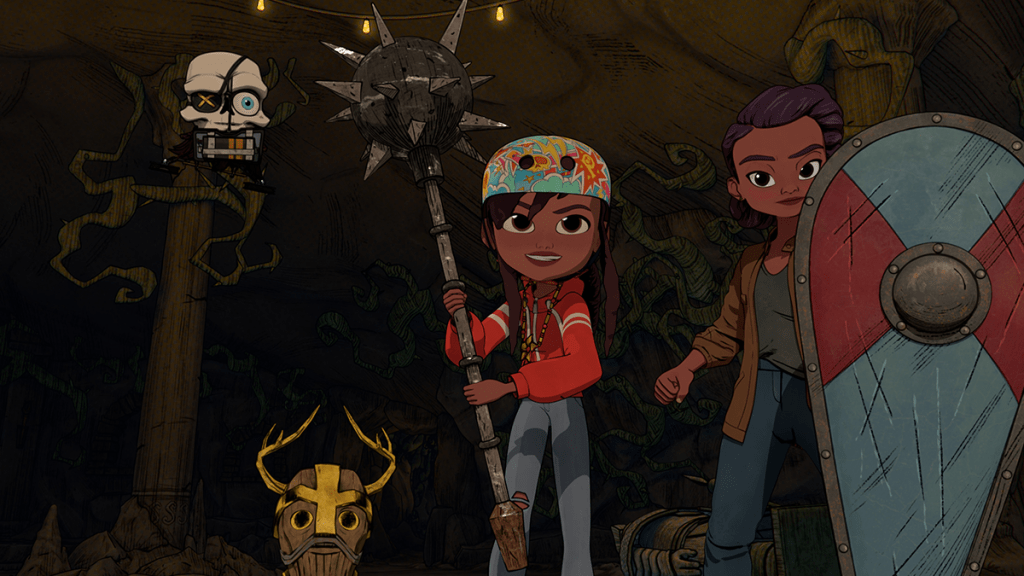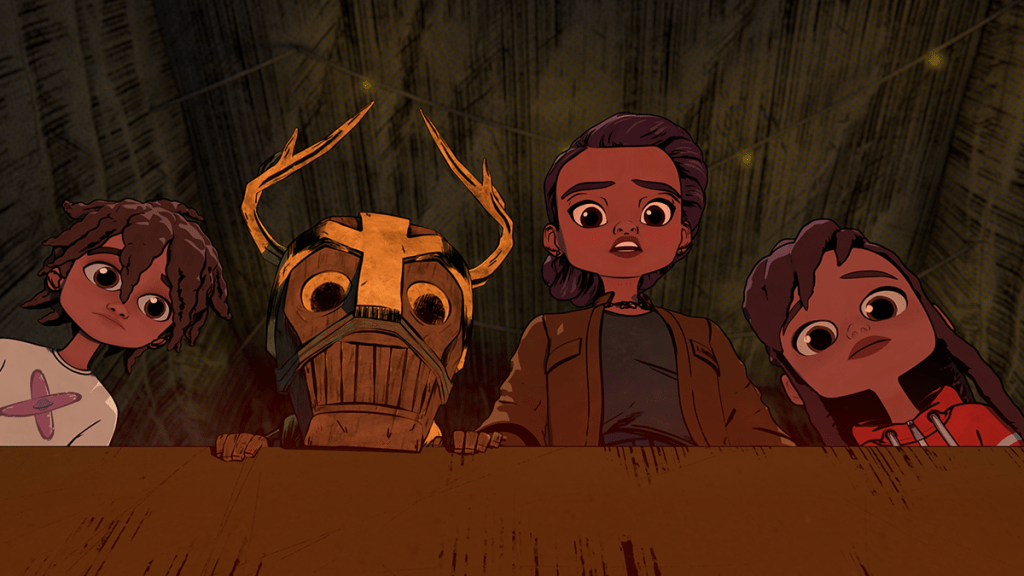ComingSoon Editor-in-Chief Tyler Treese spoke with Curses! director Leo Riley about the Apple TV+ animated series. Riley discussed creating the gateway horror show for younger people and his work on the Guardians of the Galaxy animated series. Curses! is set to premiere on Apple TV+ on Friday, October 27.
“When a generations-long family curse turns Alex Vanderhouven to stone, it’s up to his two kids, Pandora and Russ, along with his wife Sky, to return artifacts stolen by their ancestors to their rightful homes and finally lift the curse for good,” reads the series‘ official synopsis.
Tyler Treese: Can you speak to the concept of gateway horror? I love that we’re seeing more in this space now, especially on streaming services, since kids don’t jump into Friday the 13th or Nightmare on Elm Street. They need something more entry-level, so it’s great to see these more family-oriented shows that the whole family can get together and experience.
Leo Riley: It’s great. I think a buffer is good. Some of us, of course, didn’t engage in that and did jump right to the things that maybe we shouldn’t have seen right away. As far as the space goes, it is nice to see that there’s been a push into … there’s engagement in this area where I’m trying to think of likes or comps, you know, The Goonies or Gremlins — that type of content, which then allows you to bridge into … I think, as a kid, I was always interested in the creepier stuff, so now there’s more stuff for folks that are interested in that type of content.
I like the whole plot device with the curse and grappling with the misdeeds of your ancestors. What really works here is the format because you do have that overarching story, but each episode can also dig into a different artifact and have its own plot line. Can you discuss how that format came together?
I mean, all that stuff comes directly from Jeff [Dixon] and Jim [Cooper]. They came up with how the stories would work and the overall arc. I think one of the things that has been good, with regard to the artifacts, is that we did have engagement. We had a partner, Past Preservers, and we did a lot of research, backstory, and making sure things were appropriate and made sense. I would say, yeah, all of it comes from Jeff and Jim, really. Then, of course, they have some writing partners — Ami [Boghani] and Dimitry [Pompée] were a couple of the other writers, so they kind of worked out the whole arc. I just came in with the interpretation part for the visuals.
The visuals look great. I love the art style — it’s that perfect amount of spooky but never too scary. How was it, working collaboratively to really nail that unique look that the series has?
It’s great. I think, early on, I was working with David T. Chung, who was the art director, and we were trying to figure out … thinking about gateway horror, something that would be an immediate visual reference for that space. So we spent a lot of time looking at early EC Comics stuff — Vault of Horror, Tales From the Crypt, things like that as being a visual style that we could lock into. For people who maybe had that frame of reference, they could immediately identify it. Then the people who don’t, hopefully, visually, it’s compelling enough to keep folks watching.
The show’s really driven by Pandora and Russ — the two protagonists. How great was it having these two young characters where we get that family tale, but we also get to see them really come into their own throughout the series and work off each other and grow as a family unit?
If you’re doing a series to have characters that have some sort of arc in addition to us getting a real clear sense of them as character … if you’re doing that many episodes, they need a place to go, right? The voice actors were fantastic.

They really had great performances. You were also the supervising director on the Guardians of the Galaxy TV series, and that went for 79 episodes. What were you most proud about over the course of that run?
Usually, when it comes to shows, the property itself or the IP … it was great to be able to play in that space. But I think also, for a lot of these shows, a lot of it’s just about putting a crew together — a group of people that you’d like to be around and bring their talents. You just have a place where everybody can just do their best work, hopefully. So I think overall, what am I most proud of for that show? I think that we got to make it, really, and it did have a really good run,.
One of my favorite part of that show is just the Black Vortex episodes with all the different art styles. That’d be a real standout moment getting to really experiment in that manner.
Oh, definitely, definitely. When you’re kind of working in one mode for so long and then you have this special one-off where you can engage in a bunch of different styles and everything like that, yeah. That was a lot of fun.
Are you surprised that we’re not seeing more Marvel projects in the animated space of late? It really seems like the perfect medium of blending comics and film and TV.
Well, I don’t know how much of the politics I can get into, other than I would say that when I was there, it was under a different regime. Of course, things change and environments for engagement change, and they have to shift around. But the stuff that I’ve been seeing coming out of there has been pretty amazing. So I’m just hoping that we’ll be seeing more soon.
The episodes of Curses! are all pretty tight at 23 minutes. How has streaming impacted how these stories are created? Sometimes, you don’t have to stick to such strict time limits. Can you just speak to how streaming has changed the creation process, if any?
When you have the flexibility of format, it does allow for various different kinds of storytelling. I think production-wise, over my career, I think the biggest thing I’ve noticed is that what constitutes a series has completely changed. It’s completely up in the air, in some cases … I don’t know, it’s just different. It’s a different environment [that] allows for people to tell … you think about a lot of the properties that have come out that have been maybe 10 episode arcs, and maybe that’s what is sustainable for that storyline. I think that’s the biggest difference that I’ve noticed is, yeah, definitely what constitutes a season. It’s just a different animal.










